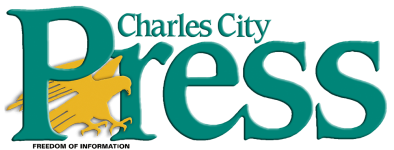Floyd County property valuations likely to increase, but that’s only part of the tax picture
By Bob Steenson, bsteenson@charlescitypress.com
The median sale prices of residences in Floyd County in 2024 was fairly close to their assessed valuation, meaning the valuation of individual residential properties will need to be adjusted upward by a smaller amount than two years ago when property valuations spiked.
Floyd County Assessor Brandi Schmidt went through the valuation process Wednesday evening for the members of the Floyd County Conference Board, which oversees the Assessor’s Office.
Members of the Conference Board are the three county supervisors, a representative of each school district in the county, and the mayor of each city in the county.
The board held a public hearing for the assessor’s budget, with no comments from the public received. The Assessor’s Office will collect $481,927 in property taxes to operate during the 2025-26 fiscal year.
After the board closed the hearing and approved the budget, Schmidt explained the preliminary numbers that will guide how assessments are adjusted.
“It is early by a few weeks of me finalizing values to give you hardcore numbers, like how much values are really going to go up,” she said. “But I wanted to give you what I could of a picture of what’s going to happen.”
Schmidt said the median assessed value ratio of residential properties in Floyd County in 2024 was 93.2%, which means those properties were assessed for less than the actual median price that residences sold for.
Since Iowa law requires that properties be assessed at 100% of market value, that means residential properties across the county will need to have their valuations increased to come up to that 100% level.
“We distribute that value across the county between townships, cities and the neighborhoods inside cities to apply that value,” Schmidt said.
Agricultural property will need to be increased by a higher rate, she said.
“Ag land values in the state of Iowa are calculated on a productivity value and it uses a five-year rolling average of income and expense information. All of that information is calculated by the Department of Revenue and provided to us,” Schmidt said.
“They provide to us a productivity value per acre and then also an ag building factor. And then we use those numbers to create, basically using the CSR (Corn Suitability rating) points, a price per point, and then those points are tallied up on each agricultural parcel.”
Floyd County agricultural land increased a little over 30% using those figures, she said.
“This was very much expected,” Schmidt said, based on profitability and expenses during the rolling five-year average.
“My understanding is that the average increase for the state of Iowa’s agriculture was 36%. So Floyd County is on the low side of that.”
Charles City Mayor Dean Andrews said people tell him frequently that their property valuation went up but they didn’t do anything to their property that would add value.
“It’s because it’s just a kind of an inflationary factor, maybe?” Andrews asked.
Schmidt said residential prices – and therefore valuations – increase when people are willing to pay more for the properties.
She compared it to groceries.
“Eggs aren’t any different than they were six months ago, but they’re a heck of a lot more expensive because they’re market-driven,” she said.
Iowa law does not allow property taxes to increase by more than 3% a year, on average, across the state, so if valuations go way up the “rollback” is adjusted as well.
That doesn’t mean an individual’s property tax can’t go up more than 3%. Some people’s taxes will go up more and some will go up less or even decrease, depending on a variety of other factors.
Just as they did last year, Schmidt’s office will send out a letter with the new assessment notices when they are ready, explaining how valuations are figured.
“The Assessor’s sole responsibility is to value properties at market (or productivity) value as required by law,” the letter says. “When considering your property’s assessment, start by asking yourself two questions: 1) What is the actual market value of my property? 2) How does this value compare to similar properties in my area?”
The letter explains that the assessment is only one part of what determines actual property taxes paid. The state rollback rate is used to determine what amount of the assessed valuation is taxable.
“The last ingredient is the levy rate,” the letter says.
Each taxing body that includes a property, including the county, school district, cities, community college, hospital, ag extension, assessor’s office, etc., comes up with a budget then divides that by the taxable valuation in its area to come up with a levy rate.
All those levies are added together to determine the actual total tax rate per $1,000 of taxable valuation each property pays.
“Remember, assessed values are just the basis for which property taxes are calculated. Property tax laws, assessment limitations and local budgets determine the amount of property taxes you pay,” the Assessor’s Office letter says.









Social Share